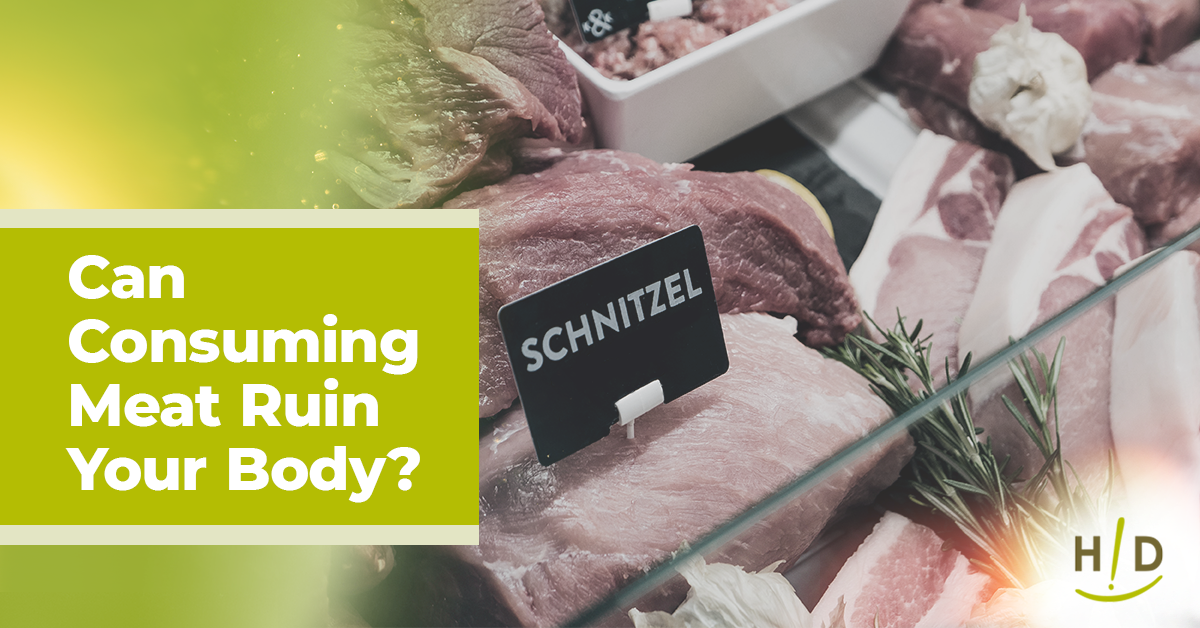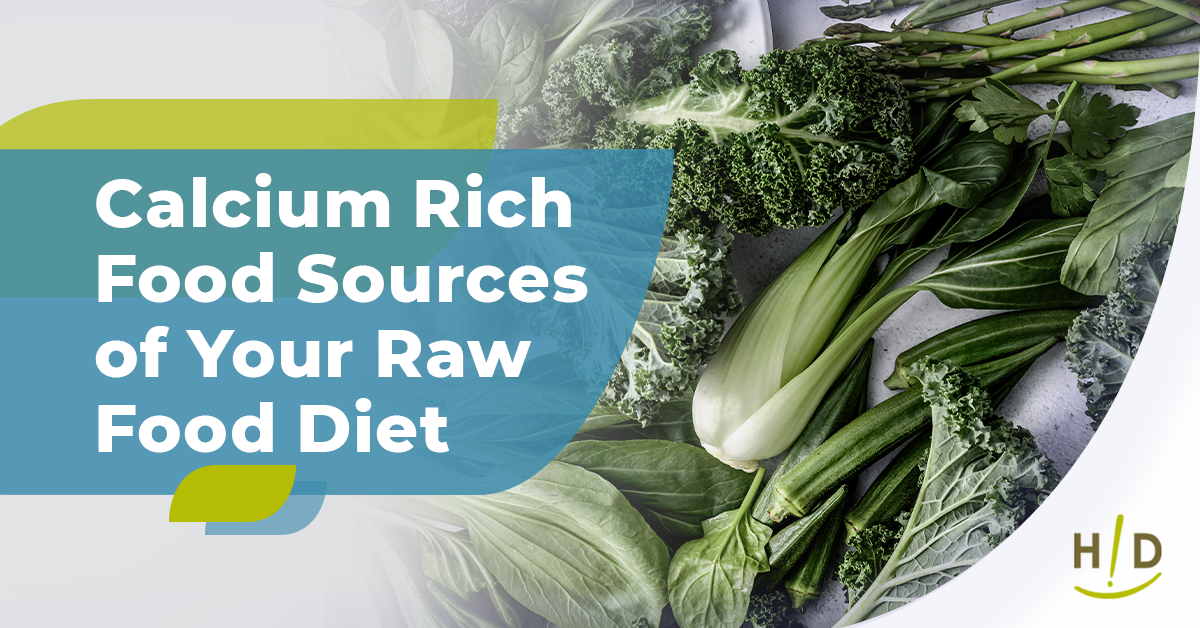There have recently been many advocates of meat-based low-carb diets telling people that saturated fats don’t cause heart disease, that meat is great for your health, and dairy products are excellent food. These people warn you to stay away from grains, especially wheat, legumes and sweet fruits. “Carbohydrates are evil!” they shout. They tell you of the dangers and deficiencies of following a vegan or vegetarian diet. But, is this really true? So, here is an answer, based on published research, looking at it from the other side.
Does Meat Ruin Your Body?
The idea is not to shout down the opposition, but present neglected information so that your entire pool of knowledge for making an informed decision is larger. There are some good points in the low-carb approach (getting away from refined and added sugars, white flour, refined oils and putting more emphasis on vegetables), but a greater perspective is needed. This article provides some of that perspective for you. There are plenty of reasons to avoid meats and minimize the amount of animal products in your diet. Here are some of the reasons. This article isn’t in depth enough for a real thesis, but it gives you, the reader, enough data and references to start digging and hunting around deeper for the truth.
1. Meat is linked to bad heart health.
The references are listed for the reader to peruse the evidence. Over 745,000 people from several countries were studied in these prospective cohort studies, with a combined 11 million people-years of follow-up. That is an absolute mountain of consistent data. (The reason for citing prospective cohort studies rather than short term randomized trials is that for dietary research prospective studies yield better long-term results in real life situations. Metabolic pathways can be explored in short-term trials, but actual real life results come from prospective studies.) Not only is meat linked to bad heart health, but a strict vegetarian diet reverses heart disease. The work of Dean Ornish and Dr. Esselstyn have adequately demonstrated this point. The Seven Countries Study was about animal products, not about saturated fat . Saturated fat and meat protein go together in food, and it was a mistake to attempt to separate them in our dietary guidelines. But that was a political move, not a science-based decision. And western culture has dearly paid for these political shenanigans.
2. Meat changes the gut flora towards putrefaction.
Toxic by-products like trimethylamine N-oxide (TMAO) come from the transformation of phosphatidylcholine in the gut of meat-eaters. Vegans and vegetarians do not produce TMAO, nor do meat-eaters after a strong course of antibiotics. After a while the gut flora is restored and meat-eaters once again produce TMAO . TMAO was associated with higher risk of heart attacks, strokes and death in a prospective cohort study . It is possible that TMAO is a biomarker and not directly a causative agent , but the production of TMAO indicates a certain amount of dysbiosis in meat-eaters.
3. Cold-water fish is the natural source of DHA, after algae.
Because of heavy metal poisoning, many fish are not fit to eat. Contrary to what is written about fish oils, there are very reputable companies that supply fish oil that is not rancid, is carefully preserved with antioxidant mixes, has very low levels of any contamination, including heavy metals. Because of the risk of contamination (was your fish tested before you ate it?) you are much safer going with fish oil for DHA that has passed complete testing for contamination.
4. Regular daily consumption of meat has been shown in prospective cohort studies to increase the risk of diabetes.
Rates of diabetes and all-cause mortality (including non-cancer, non-cardiovascular mortality) are higher in Seventh Day Adventists who eat meat . Replacing carbohydrate for more protein in the prospective EPIC-NL cohort increased the risk of diabetes.
5. “Normal” levels of animal protein intake are associated with increased risk of diabetes, heart disease death and cancer death.
Plant-based diets, but not calorie restricted diets, with minimal intake of animal protein have been shown to actually lower the level of the growth hormone, IGF-1 to safe levels. IGF-1 is a growth promoter that is especially useful during youth and is necessary throughout our lives to maintain our vitality. However, elevated levels encourage the growth of malignant cells. High levels of IGF-1 have been associated with increased risk of cancer in prospective cohort studies. Both high and very low levels of IGF-1 are detrimental to health. In elderly people where frailty is a concern, both very low levels and high levels of IGF-1 are related to increased risk of heart disease mortality. So, low normal levels of IGF-1, around 110-120 ng/ml appear to be safe concentrations to maintain our vigor without giving rise to increased cancerous growths. Regular consumption of meat likely elevates our IGF-1 levels beyond the safe level.
6. Red meat and processed meat are strongly associated with higher risk of colorectal cancer.
The evidence is strong and convincing for processed meat, but only listed as a probable source of colorectal cancer for red meat. The World Cancer Research Fund /American Institute of Cancer Research (an organization independent of government or corporate sponsorship) indicates that red meat should be avoided to reduce cancer risk. Many studies could be cited here, but the WCRF/AICR reports do a very professional job of meta-analysis and keeping up to date, so their reports are the first references to investigate.
7. Humans lack the ability to make a certain sugar, glycolyl-neuraminic acid (Neu5GC), which is applied to the terminal end of some glycoproteins and glycolipids.
Other mammals make Neu5GC and it can be found in human tissues, meaning this molecule can be incorporated into our cells and cell surfaces from what we eat. Why does this matter? Interaction between antigens against this non-self molecule can give rise to inflammation, which was shown to lead to liver cancer in a mouse model . Carcinomas tend to have much higher levels of sialic acid, and Neu5GC in particular, on the cell surfaces. In fact, Neu5GC can be used as a biomarker to distinguish between cases and controls of breast, prostate, ovarian, lung cancer and endometrium cancer, but not colorectal or pancreatic cancer . The Neu5GC attracts an antibody response, which causes inflammation that could lead to tumor progression. High levels of Neu5GC are found in red meat, but not in poultry or fish or dairy products.
8. False sense of security of nutritional intake.
Meat supplies B12, creatine, carnitine, carnosine, but is it absorbed and is it enough? Many elderly people eating meat are low in vitamin B12, about 40% in one study and their best source of B12 was fortified foods, like breakfast cereal. Chronic hypochlorhydria, a lack of stomach acid, plays a huge role in B12 nutritional status. Supplemental B12 actually helps a person optimize this important vitamin beyond what is actually possible through our modern diet. Steak is a good source of carnosine, but the body’s natural enzyme carnosinase chews it up fairly quickly, leaving you with no benefit shortly after your meal. It may take supplemental amounts to really benefit much from carnosine. This is also true of creatine—the health benefits are derived from amounts greater than what is obtained even from a red meat-rich diet.
9. There have been studies of people eating very clean diets who still had excessive rates of cancer due to their high “clean” meat consumption.
The link between meat and cancer goes back further in time and farther in global scope than the use of antibiotics and hormone injections and feedlot beef production in the USA. So far, the mechanisms for provoking disease do not include antibiotics or unnatural growth hormones. No, the problems with meat apply to “clean” meat as well as feedlot meat.
10. Much of the benefits of eating meat have been proven in short-term studies rather than in long-term population based studies.
These studies are great for eliminating confounding factors, but they neglect any long-term effects of the diets. No one should base what they eat for years on end on results from studies that ran for 12 weeks, or 24 weeks or even 2 years. These studies can show some metabolic changes that occur when one factor in a diet is changed, but they don’t help very much with real life outside of the metabolic ward. While short-term studies have many drawbacks, population cohort studies also have their own set of troubles. Looking at how people normally eat is more difficult, including the many factors that must be accounted for. And recording food intake is particularly challenging, with many of the population cohort studies using the faulty food frequency questionnaires (FFQ). These FFQs tend to wash out differences between groups so that true associations are lost in the inaccurate data.
A notable problem with cohort studies is finding a population with a wide variety of dietary intakes. Looking at the diets of women in Iowa is very unhelpful, as the diet is very homogenous. Looking at diets of Seventh Day Adventists, which range from vegans to lots of animal products, gives a much broader range of intakes of nutrients so that associations can be clearly seen. So, when a study comes out proclaiming no association between fat and breast cancer from the Nurses Health Study or the Iowa Women’s Health Study, is it because there really is no association or is the true association lost due to inaccurate FFQs and homogenized diets of the American population?
Is Your Diet Working for You?
Is what you are doing working? You may feel good and energetic, but many important biomarkers can’t be felt. Blood tests can track these biomarkers. The use of biomarkers can be very helpful. Knowing blood levels of vitamin D, omega 3 fats, total carotenoids, glycated hemoglobin (HbA1c), C-reactive protein, IGF-1, and gamma glutamyl transferase (GGT, a liver enzyme), and a few others (maybe cholesterol?) will help you know if your health is on track. Short term personal testing using heart rate variability (HRV) can help you know if diet, physical activity and training, sleep and lifestyle changes you are making are effective and meaningful. Using the sleep, HRV and activity tracking Oura ring can help track sleep patterns, overnight HRV score, activity level, and overall readiness. Are you ready for new challenges or do you need to back off and rest a bit more? Is that new supplement helping you sleep better or recover faster? The Oura ring can help answer such questions.
Consider a Plant Based Diet
The evidence here shows that eating meat is bad for your heart and entire cardiovascular system, can lead to diabetes, raises your risk of cancer by a number of mechanisms, including elevated IGF-1 and the presence of inflammatory Neu5GC, causes dysbiosis and the generation of TMAO, and can give a false sense of security that all of your nutritional needs are being met. Most of the evidence for the benefits of eating meat is from short-term studies, while the vast majority of the population-based evidence indicates that plant-based diets are healthier for people. In one study that examined food patterns (FPs) the authors commented: “Many observational studies have consistently reported that FPs that are rich in phytochemicals and low in meat or other animal products are associated with reduced risks of chronic degenerative diseases, whereas opposite food patterns, rich in animal foods and poor in plant-based foods (typically called Western or westernized diets), are associated with higher risks. Data from the Blue Zones indicate that longevity is associated with a plant-based diet, with some animal products and meat sprinkled in more as a condiment or for special occasions. A wide variety of plant-based diets work, based on what is locally available in different environments. The way that food is grown and prepared, with whom it is eaten and how much, and other lifestyle issues (moving naturally, living with purpose, shedding stress, belonging to a faith-based group, putting family first, belonging to a community that supports health behaviors) are parts of the longevity equation . The journalist Michael Pollan, who wrote In Defense of Food: An Eater’s Manifesto, summed up his advice in a simple phrase: “Eat food, not too much, mostly plants” . I think I’ll stick with his advice, as the evidence is actually really strong and robust when taken in balance.
References
- Bellavia A, Stilling F, Wolk A. High red meat intake and all-cause cardiovascular and cancer mortality: is the risk modified by fruit and vegetable intake? Am J Clin Nutr . 2016 Oct 1 ;104(4):1137–43. Available from: http://ajcn.nutrition.org/content/104/4/1137
- Preis SR, Stampfer MJ, Spiegelman D, Willett WC, Rimm EB. Dietary protein and risk of ischemic heart disease in middle-aged men. Am J Clin Nutr . 2010 Sep 29 ;ajcn.2010.29626. Available from: http://www.ajcn.org/cgi/content/abstract/ajcn.2010.29626v1
- Fraser GE, Shavlik DJ. Risk factors for all-cause and coronary heart disease mortality in the oldest-old. The Adventist Health Study. Arch Intern Med. 1997;157(19):2249–58.
- Fung TT, van Dam RM, Hankinson SE, Stampfer M, Willett WC, Hu FB. Low-carbohydrate diets and all-cause and cause-specific mortality: two cohort studies. Ann Intern Med . 2010 Sep 7 ;153(5):289–98. Available from: http://www.ncbi.nlm.nih.gov/pubmed/20820038
- Key TJ, Fraser GE, Thorogood M, Appleby PN, Beral V, Reeves G, et al. Mortality in vegetarians and nonvegetarians: detailed findings from a collaborative analysis of 5 prospective studies. Am J Clin Nutr . 1999 ;70(3):516S–524S. Available from: http://www.ajcn.org/content/70/3/516S.abstract
- Otto MC de O, Mozaffarian D, Kromhout D, Bertoni AG, Sibley CT, Jacobs DR, et al. Dietary intake of saturated fat by food source and incident cardiovascular disease: the Multi-Ethnic Study of Atherosclerosis. Am J Clin Nutr . 2012 Aug 1 ;96(2):397–404. Available from: http://www.ajcn.org/content/96/2/397
- Orlich MJ, Singh PN, Sabate J, Jaceldo-Siegl K, Fan J, Knutsen S, et al. Vegetarian dietary patterns and mortality in adventist health study 2. JAMA Intern Med . 2013 Jun 3 ;1–8. Available from: http://dx.doi.org/10.1001/jamainternmed.2013.6473
- Vergnaud A-C, Romaguera D, Peeters PH, Gils CH van, Chan DS, Romieu I, et al. Adherence to the World Cancer Research Fund/American Institute for Cancer Research guidelines and risk of death in Europe: results from the European Prospective Investigation into Nutrition and Cancer cohort study. Am J Clin Nutr . 2013 May 1 ;97(5):1107–20. Available from: http://ajcn.nutrition.org/content/97/5/1107
- Guasch-Ferré M, Babio N, Martínez-González MA, Corella D, Ros E, Martín-Peláez S, et al. Dietary fat intake and risk of cardiovascular disease and all-cause mortality in a population at high risk of cardiovascular disease. Am J Clin Nutr . 2015 Dec 1 ;102(6):1563–73. Available from: http://ajcn.nutrition.org/content/102/6/1563
- Martínez-González MA, Sánchez-Tainta A, Corella D, Salas-Salvadó J, Ros E, Arós F, et al. A provegetarian food pattern and reduction in total mortality in the Prevención con Dieta Mediterránea (PREDIMED) study. Am J Clin Nutr . 2014 Jul 1 ;100(Supplement 1):320S–328S. Available from: http://ajcn.nutrition.org/content/100/Supplement_1/320S
- Li S, Flint A, Pai JK, Forman JP, Hu FB, Willett WC, et al. Low Carbohydrate Diet From Plant or Animal Sources and Mortality Among Myocardial Infarction Survivors. J Am Heart Assoc . 2014 Oct 24 ;3(5):e001169. Available from: http://jaha.ahajournals.org/content/3/5/e001169
- Dod HS, Bhardwaj R, Sajja V, Weidner G, Hobbs GR, Konat GW, et al. Effect of intensive lifestyle changes on endothelial function and on inflammatory markers of atherosclerosis. Am J Cardiol. 2010 Feb 1;105(3):362–7.
- Frattaroli J, Weidner G, Merritt-Worden TA, Frenda S, Ornish D. Angina pectoris and atherosclerotic risk factors in the multisite cardiac lifestyle intervention program. Am J Cardiol . 2008 Apr 1;101(7):911–8. Available from: http://www.ncbi.nlm.nih.gov/pubmed/18359307
- Gould KL, Ornish D, Scherwitz L, Brown S, Edens RP, Hess MJ, et al. Changes in myocardial perfusion abnormalities by positron emission tomography after long-term, intense risk factor modification . Jama. 1995;274(11):894–901.
- Ornish D, Brown SE, Scherwitz LW, Billings JH, Armstrong WT, Ports TA, et al. Can lifestyle changes reverse coronary heart disease? The Lifestyle Heart Trial. Lancet . 1990;336(8708):129–33. Available from: http://www.ncbi.nlm.nih.gov/pubmed/1973470
- Ornish D, Scherwitz LW, Billings JH, Gould KL, Merritt TA, Sparler S, et al. Intensive lifestyle changes for reversal of coronary heart disease. Jama . 1998;280(23):2001–7. Available from: http://jama.ama-assn.org/content/280/23/2001.abstract
- Ornish D. Can lifestyle changes reverse coronary heart disease? World Rev Nutr Diet. 1993;72:38–48.
- Ornish D. Avoiding revascularization with lifestyle changes: The Multicenter Lifestyle Demonstration Project. Am J Cardiol . 1998;82(10B):72T–76T. Available from: http://www.ncbi.nlm.nih.gov/pubmed/9860380
- Ornish D. Mostly plants. Am J Cardiol. 2009 Oct 1;104(7):957–8.
- Esselstyn CB, Gendy G, Doyle J, Golubic M, Roizen MF. A way to reverse CAD? J Fam Pract . 2014 Jul;63(7):356–364b. Available from: http://www.ncbi.nlm.nih.gov/pubmed/25198208
- Esselstyn CB. Updating a 12-year experience with arrest and reversal therapy for coronary heart disease (an overdue requiem for palliative cardiology). Am J Cardiol . 1999 Aug 1;84(3):339–41, A8. Available from: http://www.ncbi.nlm.nih.gov/entrez/query.fcgi?cmd=Retrieve&db=PubMed&dopt=Citation&list_uids=10496449
- Esselstyn CB Jr, Ellis SG, Medendorp SV, Crowe TD. A strategy to arrest and reverse coronary artery disease: a 5-year longitudinal study of a single physician’s practice. J Fam Pract . 1995 Dec ;41(6):560–8. Available from: http://www.ncbi.nlm.nih.gov/pubmed/7500065
- Esselstyn CB Jr. Resolving the Coronary Artery Disease Epidemic Through Plant-Based Nutrition. Prev Cardiol . 2001 ;4(4):171–7. Available from: http://www.ncbi.nlm.nih.gov/pubmed/11832674
- Menotti A, Kromhout D, Blackburn H, Fidanza F, Buzina R, Nissinen A. Food intake patterns and 25-year mortality from coronary heart disease: cross-cultural correlations in the Seven Countries Study. The Seven Countries Study Research Group. Eur J Epidemiol. 1999 Jul;15(6):507–15.
- Koeth RA, Wang Z, Levison BS, Buffa JA, Org E, Sheehy BT, et al. Intestinal microbiota metabolism of L-carnitine, a nutrient in red meat, promotes atherosclerosis. Nat Med . 2013 May;19(5):576–85. Available from: http://www.ncbi.nlm.nih.gov/pmc/articles/PMC3650111/
- Tang WHW, Wang Z, Levison BS, Koeth RA, Britt EB, Fu X, et al. Intestinal Microbial Metabolism of Phosphatidylcholine and Cardiovascular Risk. N Engl J Med . 2013 Apr 25;368(17):1575–84. Available from: http://www.nejm.org/doi/full/10.1056/NEJMoa1109400
- McCarty MF. L-Carnitine Consumption, Its Metabolism by Intestinal Microbiota, and Cardiovascular Health. Mayo Clin Proc . 2013 Aug ;88(8):786–9. Available from: http://www.mayoclinicproceedings.org/article/S0025-6196(13)00462-X/fulltext
- Tonstad S, Stewart K, Oda K, Batech M, Herring RP, Fraser GE. Vegetarian diets and incidence of diabetes in the Adventist Health Study-2. Nutr Metab Cardiovasc Dis . 2013 Apr ;23(4):292–9. Available from: http://www.nmcd-journal.com/article/S0939-4753(11)00170-0/abstract
- Sluijs I, Beulens JWJ, van der A DL, Spijkerman AMW, Grobbee DE, van der Schouw YT. Dietary Intake of Total, Animal, and Vegetable Protein and Risk of Type 2 Diabetes in the European Prospective Investigation into Cancer and Nutrition (EPIC)-NL Study. Diabetes Care . 2010 Jan ;33(1):43–8. Available from: http://care.diabetesjournals.org/content/33/1/43.abstract
- Fontana L, Villareal DT, Das SK, Smith SR, Meydani SN, Pittas AG, et al. Effects of 2‐year calorie restriction on circulating levels of IGF‐1, IGF‐binding proteins and cortisol in nonobese men and women: a randomized clinical trial. Aging Cell . 2016 Feb;15(1):22–7. Available from: http://www.ncbi.nlm.nih.gov/pmc/articles/PMC4717266/
- Fontana L, Klein S, Holloszy JO. Long-term low-protein, low-calorie diet and endurance exercise modulate metabolic factors associated with cancer risk. Am J Clin Nutr . 2006 Dec 1 ;84(6):1456–62. Available from: http://ajcn.nutrition.org/content/84/6/1456
- Levine ME, Suarez JA, Brandhorst S, Balasubramanian P, Cheng C-W, Madia F, et al. Low Protein Intake Is Associated with a Major Reduction in IGF-1, Cancer, and Overall Mortality in the 65 and Younger but Not Older Population. Cell Metab . 2014 Mar 4 ;19(3):407–17. Available from: http://www.cell.com/cell-metabolism/abstract/S1550-4131(14)00062-X
- Tas F, Karabulut S, Serilmez M, Ciftci R, Duranyildiz D. Clinical significance of serum insulin-like growth factor-1 (IGF-1) and insulinlike growth factor binding protein-3 (IGFBP-3) in patients with epithelial ovarian cancer. Tumour Biol J Int Soc Oncodevelopmental Biol Med. 2014 Apr;35(4):3125–32.
- Cao Y, Nimptsch K, Shui IM, Platz EA, Wu K, Pollak MN, et al. Prediagnostic Plasma IGFBP-1, IGF-1 and Risk of Prostate Cancer. Int J Cancer J Int Cancer . 2015 May 15;136(10):2418–26. Available from: http://www.ncbi.nlm.nih.gov/pmc/articles/PMC4360136/
- Carlzon D, Svensson J, Petzold M, Karlsson MK, Ljunggren Ö, Tivesten Å, et al. Both Low and High Serum IGF-1 Levels Associate With Increased Risk of Cardiovascular Events in Elderly Men. J Clin Endocrinol Metab . 2014 Nov;99(11):E2308–16. Available from: https://www.ncbi.nlm.nih.gov/pmc/articles/PMC4258605/
- WCRF/AICR. World Cancer Research Fund International/American Institute for Cancer Research Continuous Update Project Report: Diet, Nutrition, Physical Activity and Colorectal Cancer . 2017. Available from: www.wcrf.org/colorectal-cancer-2017
- Our Cancer Prevention Recommendations | World Cancer Research Fund International . . Available from: http://www.wcrf.org/int/research-we-fund/our-cancer-prevention-recommendations
- Aune D, Chan DSM, Vieira AR, Navarro Rosenblatt DA, Vieira R, Greenwood DC, et al. Red and processed meat intake and risk of colorectal adenomas: a systematic review and meta-analysis of epidemiological studies. Cancer Causes Control CCC. 2013 Apr;24(4):611–27.
- Chan DSM, Lau R, Aune D, Vieira R, Greenwood DC, Kampman E, et al. Red and processed meat and colorectal cancer incidence: meta-analysis of prospective studies. PloS One. 2011;6(6):e20456.
- Samraj AN, Pearce OMT, Läubli H, Crittenden AN, Bergfeld AK, Banda K, et al. A red meat-derived glycan promotes inflammation and cancer progression. Proc Natl Acad Sci . 2015 Jan 13 ;112(2):542–7. Available from: http://www.pnas.org/content/112/2/542
- Padler-Karavani V, Hurtado-Ziola N, Pu M, Yu H, Huang S, Muthana S, et al. Human Xeno-autoantibodies Against a Non-human Sialic acid Serve As Novel Serum Biomarkers and Immunotherapeutics in Cancer. Cancer Res . 2011 May 1;71(9):3352–63. Available from: https://www.ncbi.nlm.nih.gov/pmc/articles/PMC3085609/
- Tucker KL, Rich S, Rosenberg I, Jacques P, Dallal G, Wilson PW, et al. Plasma vitamin B-12 concentrations relate to intake source in the Framingham Offspring Study. Am J Clin Nutr . 2000 Feb 1 ;71(2):514–22. Available from: http://ajcn.nutrition.org/content/71/2/514
- Buettner D. The Blue Zones Solution: Eating and Living Like the World’s Healthiest People. Reprint edition. National Geographic; 2017. 320 p.
- Pollan M. In Defense of Food: An Eater’s Manifesto. 1 edition. New York: Penguin Press; 2008. 256 p.








